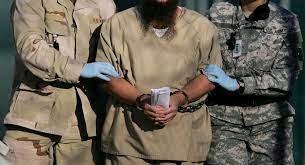This past week, my Media Law and Literacy class here at High Point University were back at it again with our EOTO presentations; this time surrounding the ideas of false information through theories, policy, media sphere, and awareness. One of the only presentations that really piqued my interest was the presentation on CIA Black sites. Ever since I was young, the CIA, FBI, and their millions of conspiracy theories were always something I was infatuated with, and so writing about this presentation seemed like a no-brainer.
Although the secrecy both from the government and about these black sites is overwhelming and preventative towards giving a concise breakdown of them, we can build backwards with the context of CIA Black sites. After the tragic terrorist attacks of 9/11, former President George W. Bush and his administration encouraged the Central Intelligence Agency (CIA), to create these secret outside facilities “to detain and interrogate high level Al-Qaeda suspects.” And in 2006, these black sites were implemented, the first in Guantanamo, but then spanning eight different countries. These black sites can be most commonly found in war territories with the general purpose of detaining enemy soldiers, criminals, terrorists, or combatants. The black sites in question are some of the most secretive places in the entire world, so it is still hard to tell exactly how many detainees have been taken to these sites, or how many sights in question exist. However, it is said that there were about forty individuals that have been taken there over time. Given the efficacy (or the efficacy in the government’s eyes) of these black sites, they began to use them for additional international investigations, hence the growing and unknown number of attendees. It is said by the government that they use “enhanced interrogation methods” to interrogate these suspects, which we all know is essentially code for torturing. In fact, The New York Times has an article dedicated to a detainee who came forward about just how grueling the treatment was at the black sites he visited. In his recount, about seven of the forty taken there were subjected to these “enhanced interrogation techniques,” and produced no information. Additionally, three of the detainees were subject to waterboarding techniques. They claim this “method” is useful, however as stated in the presentation, only a handful of detainees have actually assisted in investigations.
Consequently, these severe and secretive black sites come with internal and international effects. The biggest issue, spanning all areas of the topic, is trust. Before diving into the negative effects however, it is important to address that while the black sites are clearly lacking in morality and legality, the initial idea of these black sites wasn’t meant to be deceptive or this torturous. In fact, I think an argument can be made that some of the world’s biggest terrorists or criminals wouldn’t be caught without them; but at what cost? These few and far between big breaks like finding and killing Bin Laden are great, but these innocent people who get taken to these locations on faulty information are just as much a real person as the terrorists they’re torturing. This secrecy and harm not only leads to distrust within the citizens and their government, but it can have an even larger effect on the United States’ international relations. These CIA black sites are essentially tarnishing the reputation of the United States, the government, and the CIA; especially with these detainees beginning to come forward. If surrounding nations feel they cannot trust the United States, that could mean negative effects in the economic sphere, and the political sphere. If nations do not want to work with us because they can not trust us, we could lose key defense bases, fly over privileges, or many other military advancements to protect national security, or countries we have agreements/ties with. This can also affect our economy, as we could lose important trade deals such as our Free Trade Agreements (FTA’s) we have with over twenty other countries. Which can lead to shortages of necessities, inflation, and an eventual economic crisis. No stable relationship was ever built on distrust, and this secrecy and “no holds barred” format of interrogation is not the correct direction to take our nation, or the world, into.
To conclude, there were many impressive EOTO presentations this time around, but the CIA black sites was definitely the most interesting to me. Learning just how much we don't know about our government is terrifying, but so necessary.






No comments:
Post a Comment